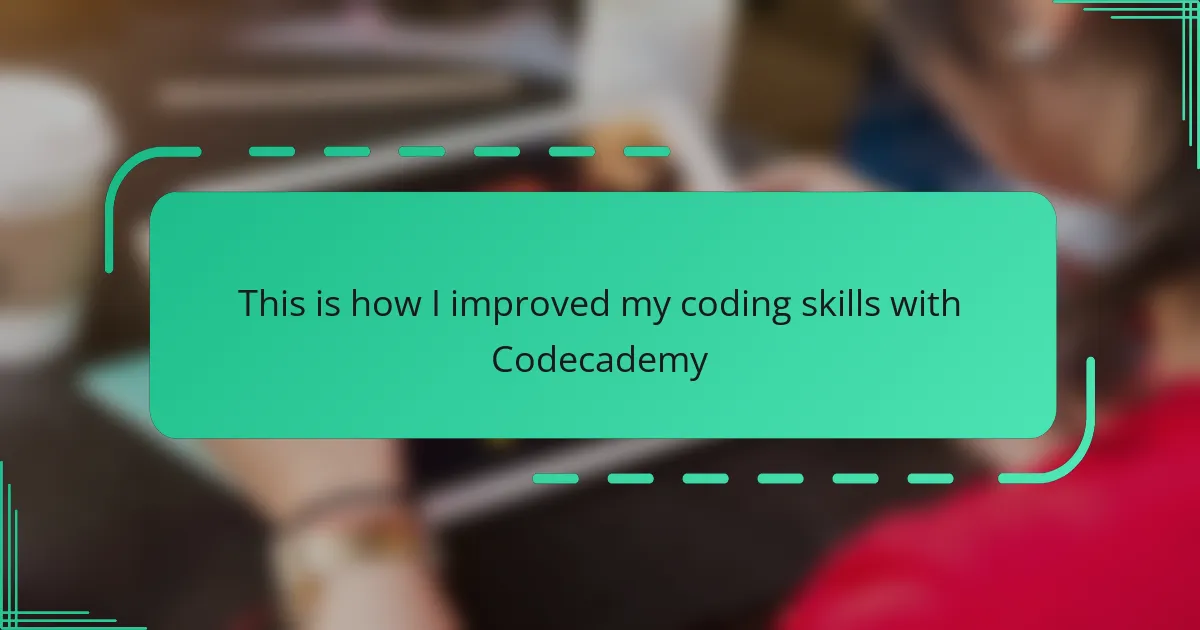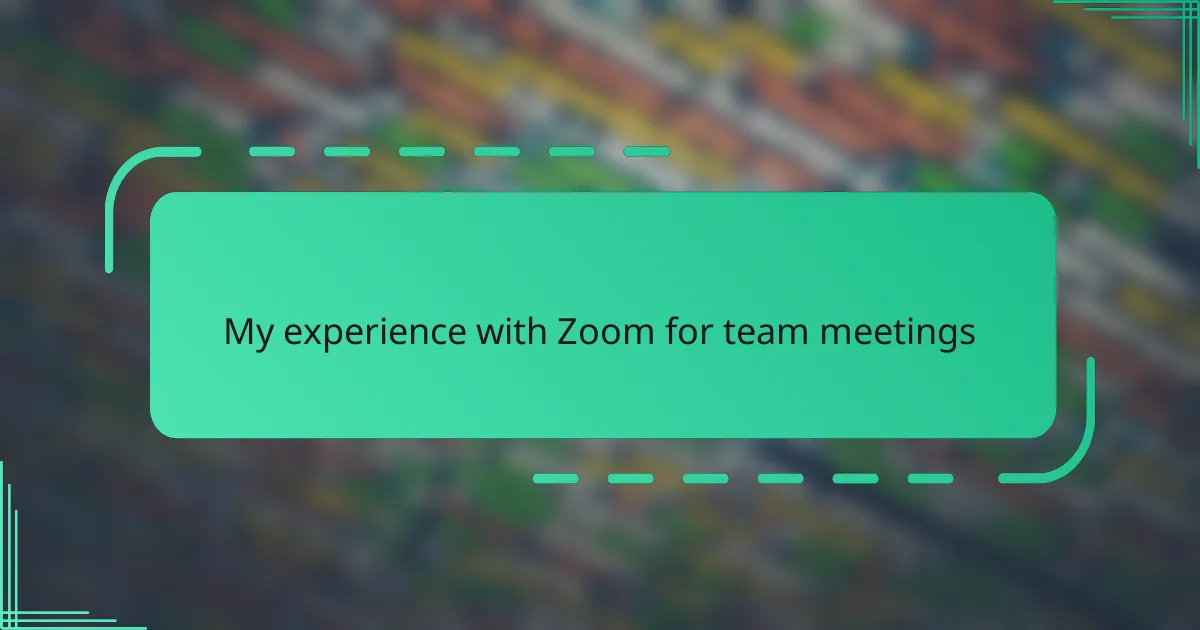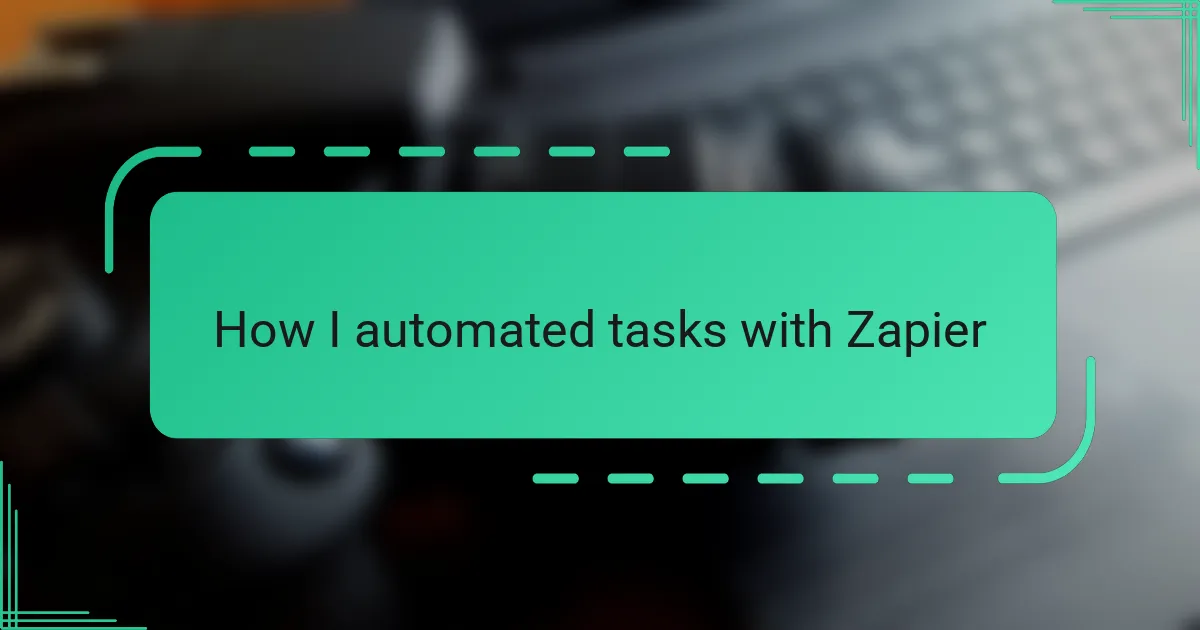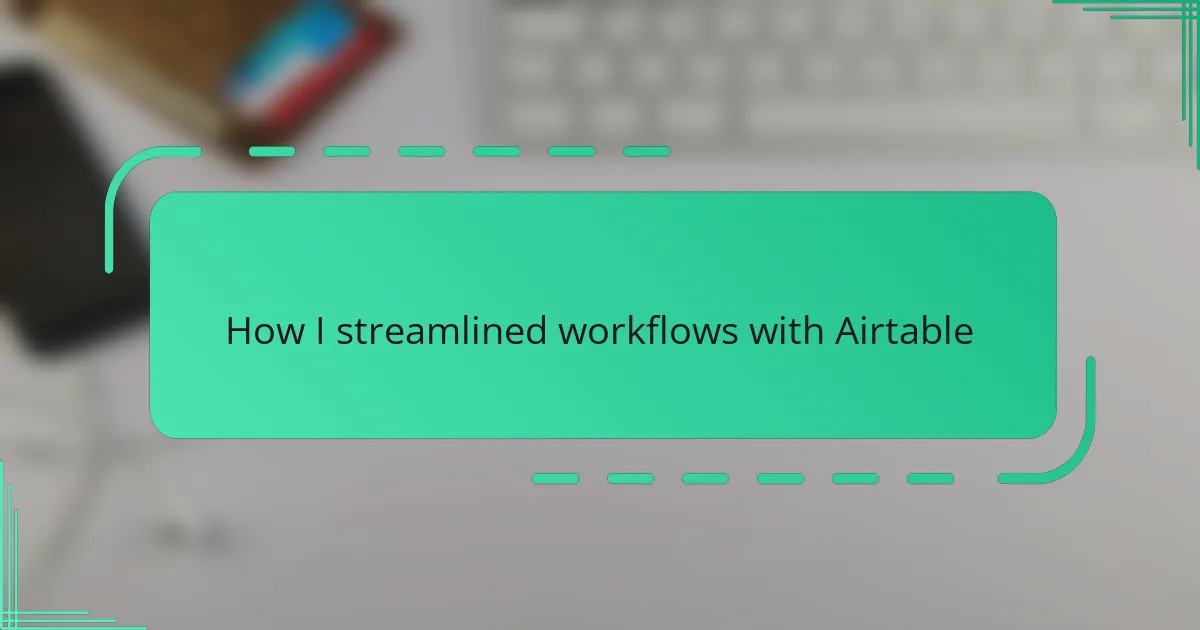Key takeaways
- Codecademy’s intuitive platform and interactive coding environment enhance engagement and make learning to code accessible for all skill levels.
- Setting clear, achievable coding goals and breaking them into smaller tasks fosters motivation and manageable progress.
- Practical exercises and projects encourage active learning, promoting critical thinking and problem-solving skills.
- Community support and the willingness to ask for help play crucial roles in overcoming coding challenges and building confidence.
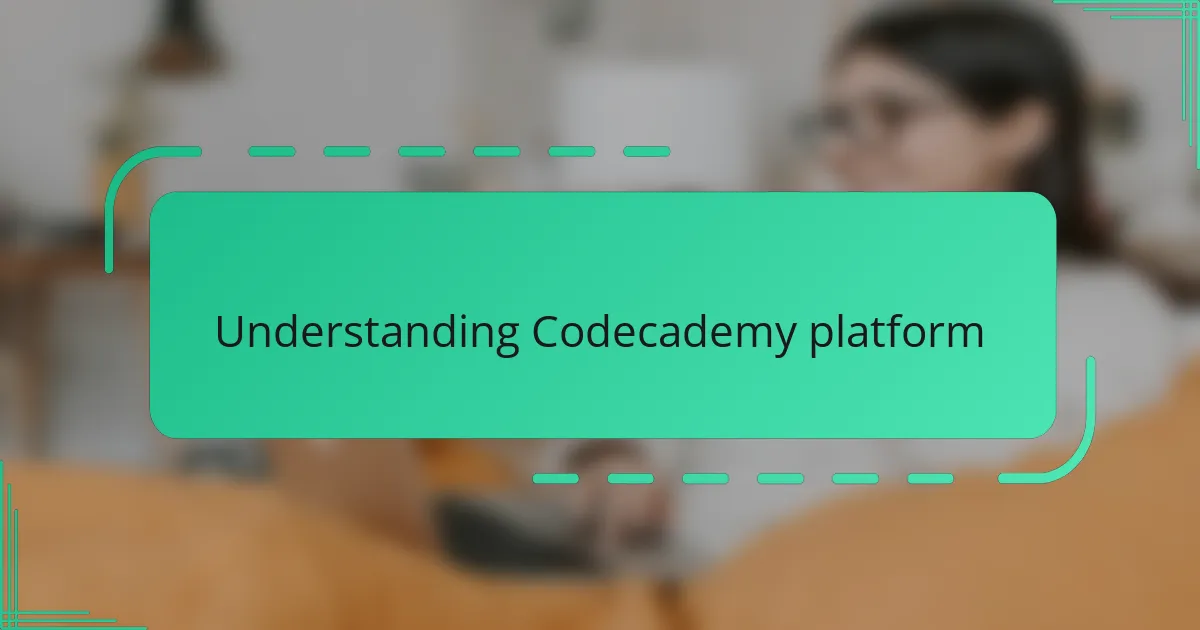
Understanding Codecademy platform
When I first logged into Codecademy, I was struck by how intuitive the platform felt. The straightforward layout made it easy to dive right into coding without feeling overwhelmed. Have you ever opened a website and immediately felt unsure where to start? Codecademy avoids that confusion by guiding you step-by-step.
One feature I found especially helpful is the interactive coding environment right in the browser. Instead of setting up complicated software, I could write and test code instantly. This hands-on approach kept me engaged and made learning feel like solving puzzles rather than tackling tedious exercises.
The platform also tailors its lessons to different skill levels, which gave me the confidence to progress at my own pace. It’s reassuring to know that no matter how much you already know, Codecademy adapts to meet you where you are. That personalized feel made my learning journey less daunting and much more rewarding.

Benefits of online coding courses
Online coding courses like Codecademy have this incredible flexibility that I found life-changing. I could fit learning into my unpredictable schedule without the stress of fixed class times. Isn’t it amazing how being able to pick up where you left off can keep motivation alive?
Another benefit that really stood out to me is the instant feedback you get. When I wrote code and saw results immediately, it felt like a conversation with the computer itself. That real-time correction saved me so much trial and error and helped build my confidence faster than I expected.
I also appreciate how online courses connect you to a community of learners and experts. Whenever I hit a roadblock, discussions and forums were right there to offer support. It’s comforting to realize you’re not alone, and that sense of belonging makes the learning journey much more enjoyable.
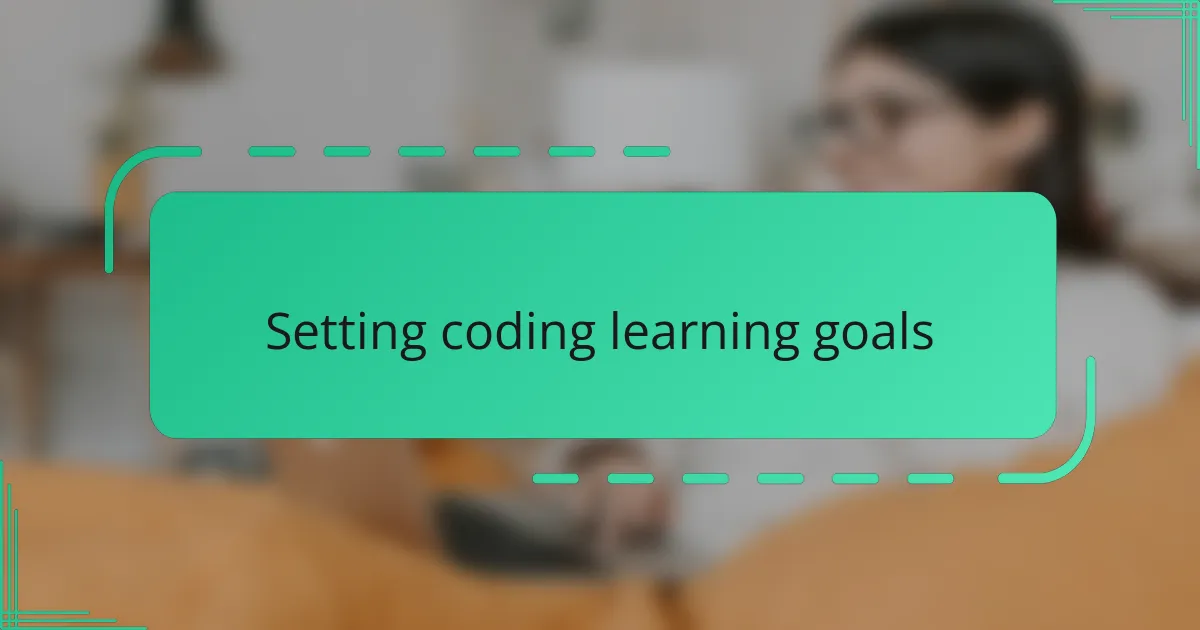
Setting coding learning goals
Setting clear coding goals was a game-changer for me. At first, I felt like I was jumping into an ocean without a life jacket—so I decided to map out exactly what I wanted to achieve each week. Have you ever noticed how having a target makes even the toughest tasks feel more manageable?
I broke my goals into small, achievable steps, like mastering a specific concept or completing a Codecademy project. This approach kept me motivated because every little win felt like real progress. It’s amazing how celebrating these tiny milestones can fuel your enthusiasm to keep going.
Sometimes, I struggled when my goals were too vague or overly ambitious. Adjusting them to be realistic made a big difference. Don’t you think it’s easier to stay committed when your goals feel within reach rather than like a distant dream? For me, that shift made all the difference.
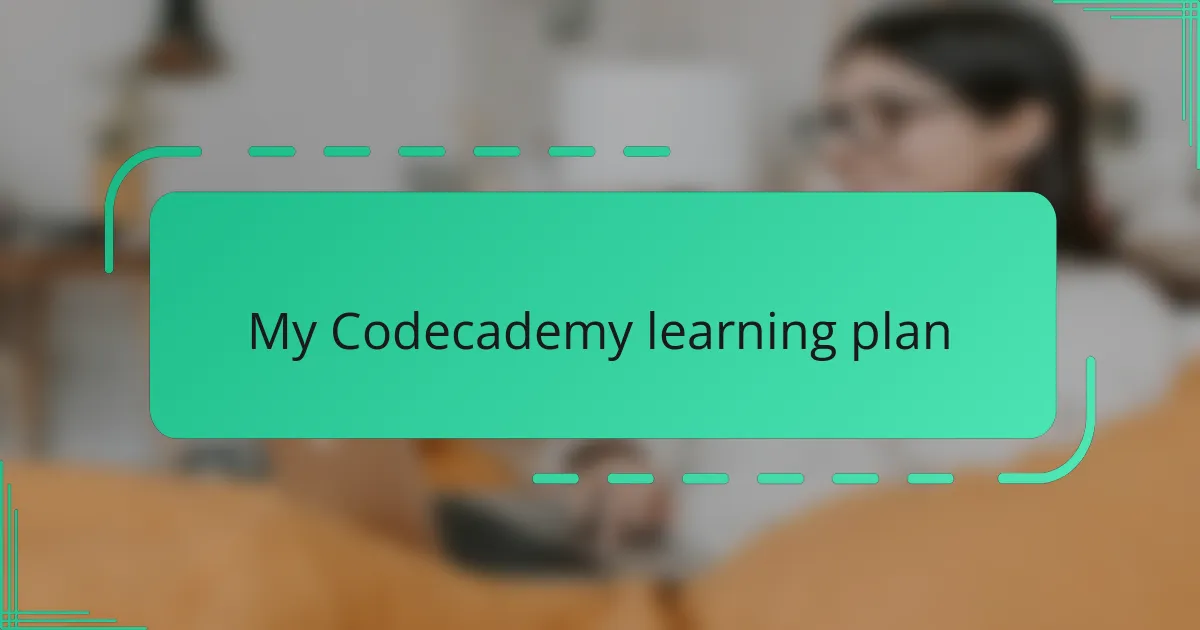
My Codecademy learning plan
Planning my learning on Codecademy wasn’t just about picking courses randomly; it was about creating a roadmap that felt both challenging and doable. I asked myself, what skills did I really want to build, and how could I break them down into daily or weekly tasks? That clarity gave me a sense of direction that was incredibly motivating.
One tactic I loved was mixing theory with practice. Instead of just reading or watching tutorials, I scheduled time to immediately apply what I learned through Codecademy’s projects and exercises. Have you ever noticed how coding sticks better when you’re actively creating something? For me, this hands-on rhythm made a huge difference in retaining knowledge.
I also made room for flexibility in my plan because life is unpredictable. Some days, I could dive deep, and other days, just a quick lesson was all I had time for. Do you think a rigid schedule would have worked for me? Probably not. Adapting goals without losing momentum kept my progress consistent and enjoyable.
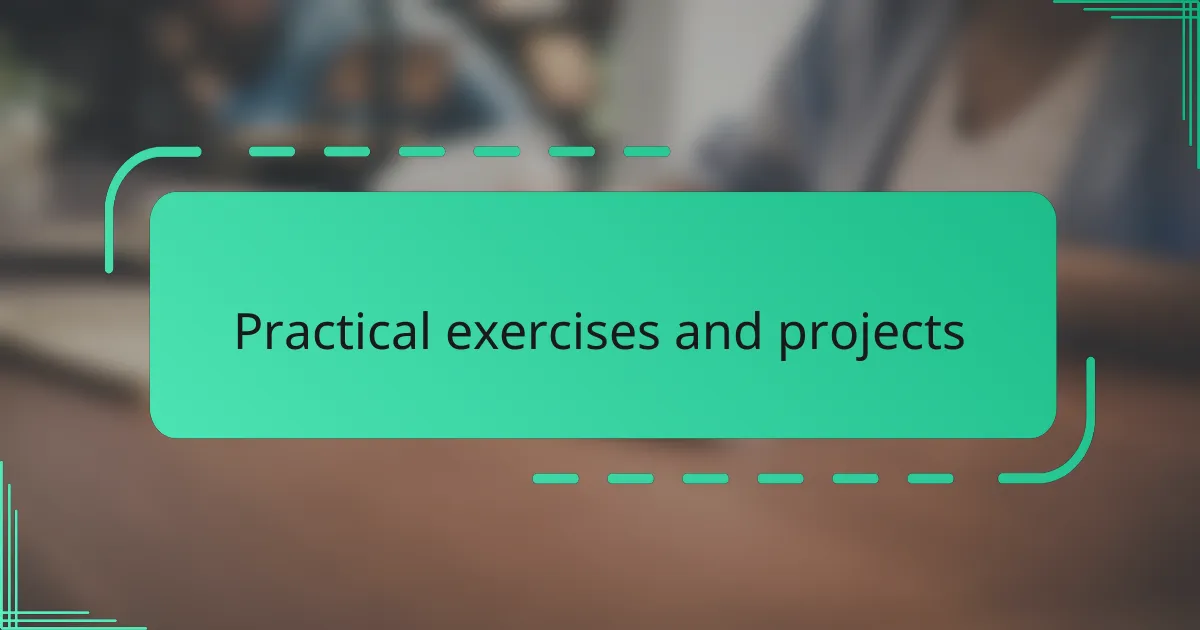
Practical exercises and projects
One thing that truly helped me improve was diving headfirst into Codecademy’s practical exercises. Instead of just reading about concepts, I got to type out the code myself, which made the lessons click in a way passive learning never did. Don’t you find that actually doing something makes it more real? For me, each exercise felt like a mini-challenge that kept me hooked.
Projects were another game-changer. Tackling a project meant I had to piece together everything I’d learned, and that’s where the real learning happened. I remember feeling a mix of excitement and nervousness when starting my first project, but finishing it gave me a sense of accomplishment I hadn’t expected. Have you ever completed something and thought, “Wow, I actually built this”? That’s powerful motivation.
What I appreciated most was how these practical tasks forced me to think critically and problem-solve, rather than just memorize syntax. When an error popped up, it was like a puzzle beckoning me to investigate and fix it. Instead of frustration, I felt curiosity—how can I crack this? That shift in mindset turned coding from a chore into an engaging challenge.
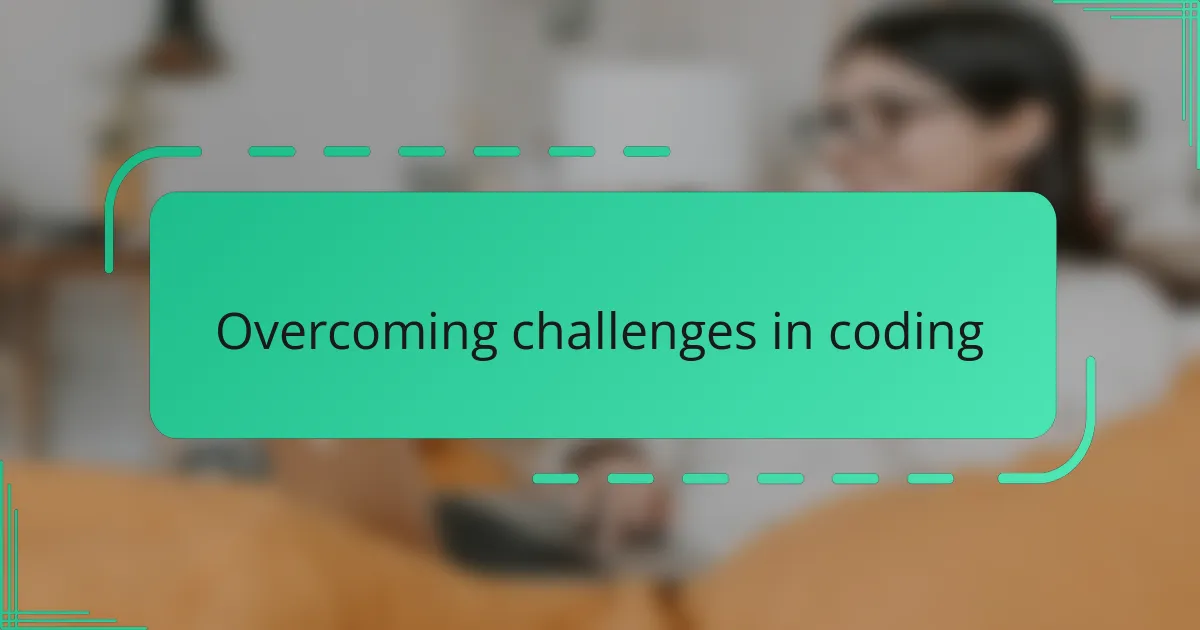
Overcoming challenges in coding
I’ll be honest, overcoming challenges in coding felt overwhelming at times. There were moments when a bug wouldn’t budge, and I questioned if I was cut out for this. Have you ever stared at a screen, frustrated because your code just wouldn’t work? That feeling of hitting a wall can be discouraging, but it also sparked my determination to push through.
What helped me the most was breaking problems down into smaller parts rather than trying to solve everything at once. I remember one tricky exercise where I kept failing until I slowed down and tackled each piece separately. That approach not only made the coding less intimidating but also boosted my confidence every time I solved a piece.
Sometimes, asking for help made all the difference. Codecademy’s community became my go-to whenever I was stuck, and it was reassuring to realize that struggling is just part of the learning process. Have you ever hesitated to ask questions? I used to, but now I see that reaching out is actually a smart strategy, not a weakness.
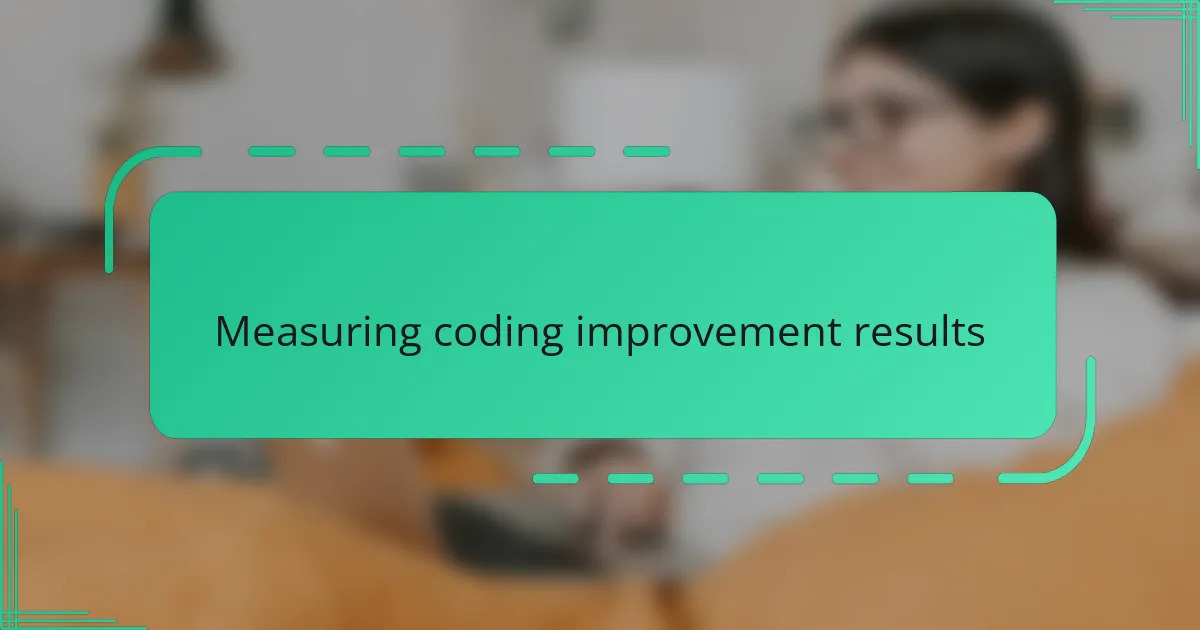
Measuring coding improvement results
Measuring how much I improved my coding skills on Codecademy wasn’t always straightforward. I remember staring at my progress dashboard, wondering if finishing more lessons truly meant I was getting better or just moving through the motions. Have you ever felt that way, questioning if the numbers really capture real growth?
What helped me clarify this was tracking my ability to solve problems without hints or looking up answers. At first, I needed help constantly, but over time, I noticed fewer pauses and more “aha” moments while coding. This personal gauge of independence felt like a true indicator of my improvement, beyond just course completion stats.
I also tested myself by revisiting old exercises or writing simple programs from scratch. Seeing how much faster and cleaner my code had become was a big confidence boost. Isn’t it amazing how those small tests can show progress better than any score or percentage? That really made my learning feel tangible and rewarding.
